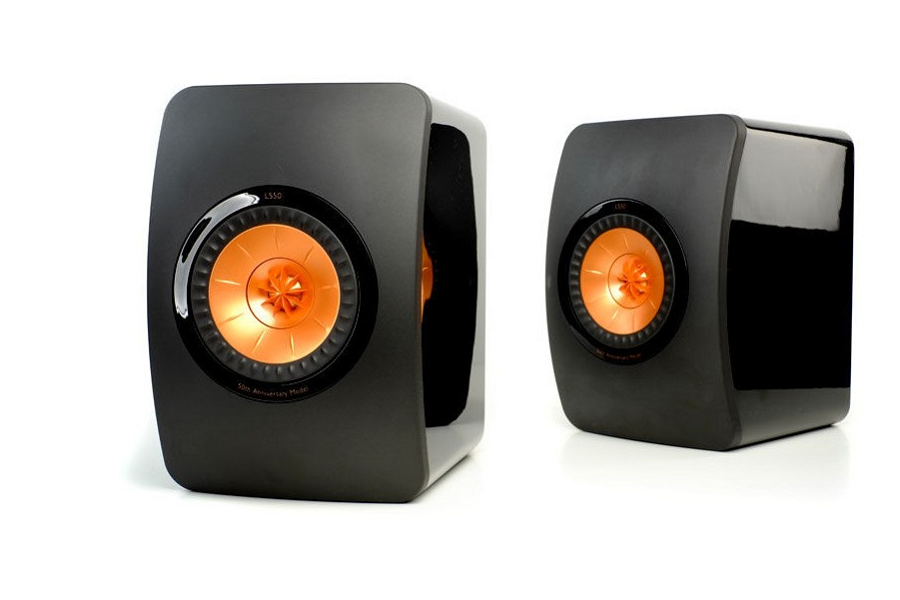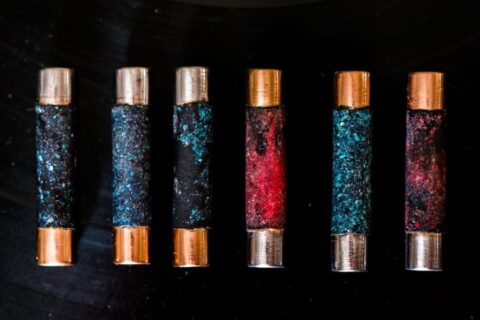Personally I really like the 21st Century Hadron Collider ‘chic’ styling of the LS50 drive unit with its ‘tangerine’ waveguide and ‘Z’ surround material.
I asked KEF if it is available separately, which it is: the LS50 drivers (SVC+SP1625) are available at £158.50 ea plus £9 carriage plus VAT. More of that later! The driver may be exposed to prying fingers, dust or worse and is best placed upon heavy substantial stands around 500mm – 600mm tall.
Specifications of the LS5 are here.
With such a strong visual presence KEF have tried to balance the tastes of the ‘Lifestyle’ purchaser – usually young professionals seeking neo-aesthetic interiors, with the demands of the audiophile wanting maximum sound per pound. At £800 per pair the LS50 is an outstanding deal which demands audition in any system build not merely as a downsize option but perhaps finally as an arrival at sonic satisfaction!
The cabinet build, and KEF logo in piano black gloss finish, is immaculate. The speakers are surprisingly heavy, which is always a good sign but a glance at the internal construction explains the commitment to excellence that KEF have strived to achieve in this product. It is surprising that although there are no grills this may be an oversight in the long term!
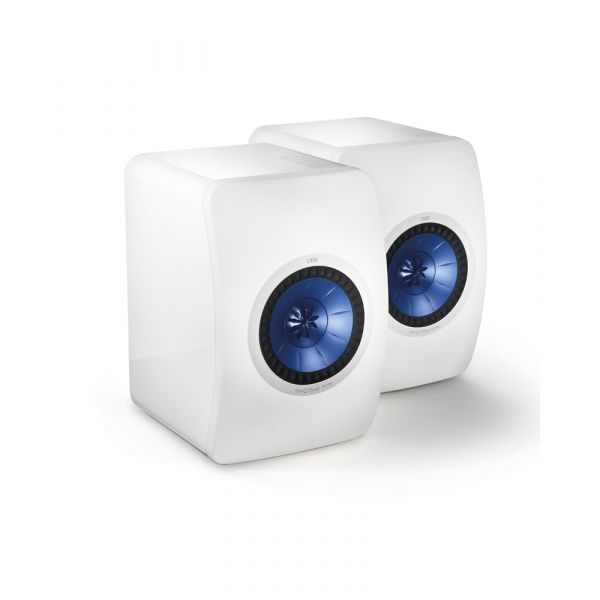
The LS50 Sound
Ever since the 1965 BBC report on the Goodmans Maxim, audiophiles have defined a link between the BBC and small speakers as a mark of excellence. Notably the Rogers LS3/5A itself using KEF driver units that originated life as the KEF Cresta (IWA Vintage) and so now we have the KEF LS50 Model claiming the rights to the heritage that has gone before it; and why not! However this is not all, KEF makes claims for the LS50 such as the ‘ultimate studio experience’, and ‘the ultimate mini monitor for the home’ which need to be substantiated; so with great excitement I gave them a listen!
As with any review consistency must be maintained in an A/B comparison so that the only changes, at first, to my usual reference system was the substitution of my NS1000M’s for the LS50’s on a variety of ballasted stands using gel pads to protect the finish from spikes. I tried various positions from 52” high, (The ‘Klipschorn’ Measure) to the centre of the LS50 driver being at 40” simulating the height of this driver in the Blade Loudspeaker, to the user guide recommended 600mm with a 45 degree toe in which worked ‘best’. In this respect the LS50 was particularly ‘fussy’ and position influenced sound and dimensionality tremendously suggesting a surprising demand on placement in any room or an automatic position and listen directive for prospective buyers obviously lost on this reviewer!
I also noted straight away that these speakers do not ‘beam’ sound downwards and are the first speakers passing through my system, new or old, not to demonstrate this tendency and as a result of computer modelling perhaps a factor in explaining room interaction or lack of it?
The LS50’s come supplied with foam bungs, which work best when excessive ‘bass’ is experienced too close to a rear wall, in the uniquely designed rear port which is elliptical and contain a rather sexual material within the ‘tube’ that organically expands absorbing extraneous sound energy and probably in part explains the sense of impressive scale obtained from such a small enclosure!
A staggering scale of sound!
From the first touch of the ‘play’ button the LS50 truly surprised by exhibiting a staggering scale of sound from such small enclosures taking one’s breath away. Listening to the ‘Helsinki Project’ NAIM CD by Jason Carter supplied by Acoustic Streams – they know of my weakness for all things Finnish – the LS50 satisfied, and would not embarrass the ‘bass’ aficionado! Unfortunately the bass was not textured, layered or articulate in absolute terms. It was fulsome but lacked slam and overshadowed the midrange and treble detail that I knew was there with a rather one toned bass ‘blur’ or slop! This could possibly be explained by a lack of burn in perhaps but it would certainly concern the more demanding listener on first hearing their new purchase and expecting so much more!
That the driver was truly ‘pistonic’ and tight could be seen and heard in its stop/start actions and it was this that made me wonder how the driver would perform in my TQWP and allowed to breath, however it generates so much energy that it gave the sense that the rigid enclosure was too small to contain the energy even with the expanding internal port for the dynamics to be released. So in these early days with the LS50’s and the expectations surrounding them, plus long listening sessions – a good sign – the sound could be best described as beguiling and civilised; musical in terms of Hi-Fi but not absolutely precise.
The link between listener and performer remained unfulfilled. The most exciting group of the Punk era (IMHO), Wire on their first album ‘Pink Flag’ asked a very pertinent question:
‘There’s something going on that’s not quite right’!
Continued listening clarified the situation by a realisation that the LS50 was always in control as it stood, and would not be phased, unlike the Wharfedale Diamond II in my possession which played music as if its life depended on it – wrong but exciting – all edges, crash, splash and attack!
Everything has its upside though and with the LS50’s playing the ‘edgy’ Court and Spark CD by Joni Mitchell it presented a smoothed mix which revealed nuances lost in the excitement of the moment of other speakers, yet I constantly questioned what I was meant to be listening to; a small stand mount trying to outperform itself or its competitors, or a replacement for the ‘Big box’?
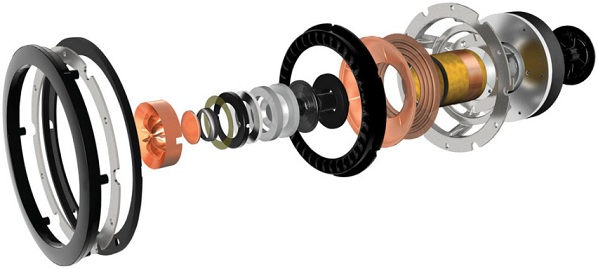
The Ultimate Mini Monitor for the home?
As it stood it was not, could not, perform as a near field monitor lacking transient pace and an ability to show up every fault in the mix as the Yamaha NS10 still does to this day!
So was I aiming too high with my own expectations; maybe? Today’s sound/size debate would see the LS50 winning hands down as revealing speakers are often seen as harsh by the demographic this product is aimed at, and the relatively diminutive LS50 would more than deliver the goods for the vast majority of people.
It was obvious that the LS50 had more to offer and it became a mission to realize its full potential. This is where the vital relationship with a great dealer comes into its own, utilising their knowledge of the products and sharing good practice. So somewhat baffled at the lack of detail and bass control I went to discuss the problem with this speakers review suppliers James Shannon and Mick Crayton at Acoustic Streams again their skills, knowledge and KEF manual was referred to:
“Hi-Fi is a very personal thing. Just because a product is a “Best Buy”, it does not mean you are going to like it! To make matters more complicated, there is always the matter of “System Synergy”. The key to a great sounding Hi-Fi is matching components not only to each other but to your own musical taste. Even at Acoustic Streams if Mick or I were to build a Hi-Fi for ourselves, we wouldn’t choose the same components. The only way to get your system right is auditioning equipment, in store and at your own home. Trying different combinations until you reach your own personal music nirvana.” – James
Which speaker cable should I use? KEF state: Our loudspeakers use carefully graded OFC internal wiring and high quality components. The cable between the amplifier and the inputs on your speakers can be a potential limitation in the system. As a general rule, any high quality multi strand or solid conductor will give good results. Speaker cable can be a very personal choice, for best results avoid very thin cables or “bell wire” as they can strangle the signals that your amplifier is sending to your speakers.
One does take for granted that a great system will always be a great system and I had not considered that when reviewing a new speaker that system building would then be on the agenda in such a big way. Firstly as the LS50 is internally wired with high quality OFC Copper I presumed that the Be Yamamura cables I use as standard would work perfectly – not so; it added to the overblown bass and so James suggested switching to Chord Silver cables, namely Odyssey 2 and better still Chord Epic Twin which achieved the balance tonally. The change of cables was dramatic shifting the sound to a more acceptable balance, placing bass in context and liberating the treble, speeding up the transients and lifting that ‘edge’ to notes into place.
Further enhancements were suggested such as removing any mains conditioners from the signal path and it became obvious that the KEF LS50 is not an ideal match with Valve amplifiers or even hybrids as in my Musical Fidelity F Series in High power mode. As a more balanced purchase for sound proposition the LS50 would ideally match a solid state amplifier – Naim or the Rega Brio R – which I tried fed directly from the mains. The Yamaha NS1000M hated the Brio and spat out hiss explaining perfectly my own choice of amplification and how it is vital to work with a system to create synergy which may not be based upon cost or a combination of ‘Best Buys’!! Yet it does remind the reviewer that familiarity with a reference is vital and that the only change should be the review item to identify what works and what does not – reviewers who mix and match what they are reviewing at the time might be misleading the reader by not referring to some fixed point of perspective.
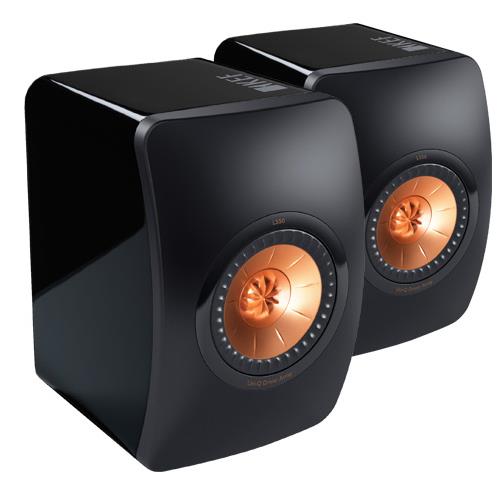
So now we could start again!
It was at this time that my HDCD re-master of Don Juan’s Reckless Daughter by Joni Mitchell arrived and being familiar with this music on vinyl I couldn’t wait to see how the LS50’s handled Jaco Pastorius playing bass – long sustained deep growling seismic bass notes. Now the KEF displayed an ability to create a bass that emanated in an eruption of multi layered bass textures and it ‘growled’ putting a smile on my face at last! Indeed after the disc had been played several times I could clearly smell a ‘plastic’ odour suggesting that this HDCD certainly clears away the ‘newness’ of a speaker and points to the possibilities to coax music out of the box. This is a ‘burn in’ disc par excellence!
The orchestral jazz fusion of ‘Paprika Plains’, from the same disc with its piano staccato fared less well still suggesting a ‘boxiness’ and restrictive colourations as I perceived when the same track was again referenced against the Yamaha’s. However the LS50’s were more in a groove and continued to intrigue with their different voicing.
Conclusions
Considering the LS50’s as a possible downsize for my Yamaha NS1000M was never going to happen – they (Yamaha’s) remain unchallenged in their effortless beauty and ability to take me somewhere else – away from Hi – Fi – but a very small speaker from the mists of Wharfedale’s past was always up for a run for your money and reminds one of an old maxim that their real plus point is they did not even try to do the things that small speakers cannot (loads of bass etc.) they just concentrated on the strong parts they could do well, detailed mid and top end and great stereo imaging.
I found the KEF LS50 to be very revealing of ancillary equipment, not because they are neutral, they are not, but rather a demanding design based upon advanced technologies demanding in their own right the highest standard of source and amplification to make them perform at their best. In this quest a local dealer who can offer a selection of alternatives is a must, so be prepared for perhaps a longer journey of discovery than you had anticipated.
So in summary: Strong Visual Aesthetic – Amazing finish, and build combined with technological trickle down from KEF Blades at a great price!
• A speaker to certainly impress a new generation being ‘weaned’ off mobile devices and searching for more – a good direction for the industry as a whole.
• Not the most revealing sound as a monitor and other mini monitors might work within an existing system better and not be so demanding, as always listen before buying.
• The Uni-Q driver might have further potential in other applications of speaker cabinet design.


